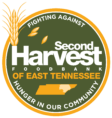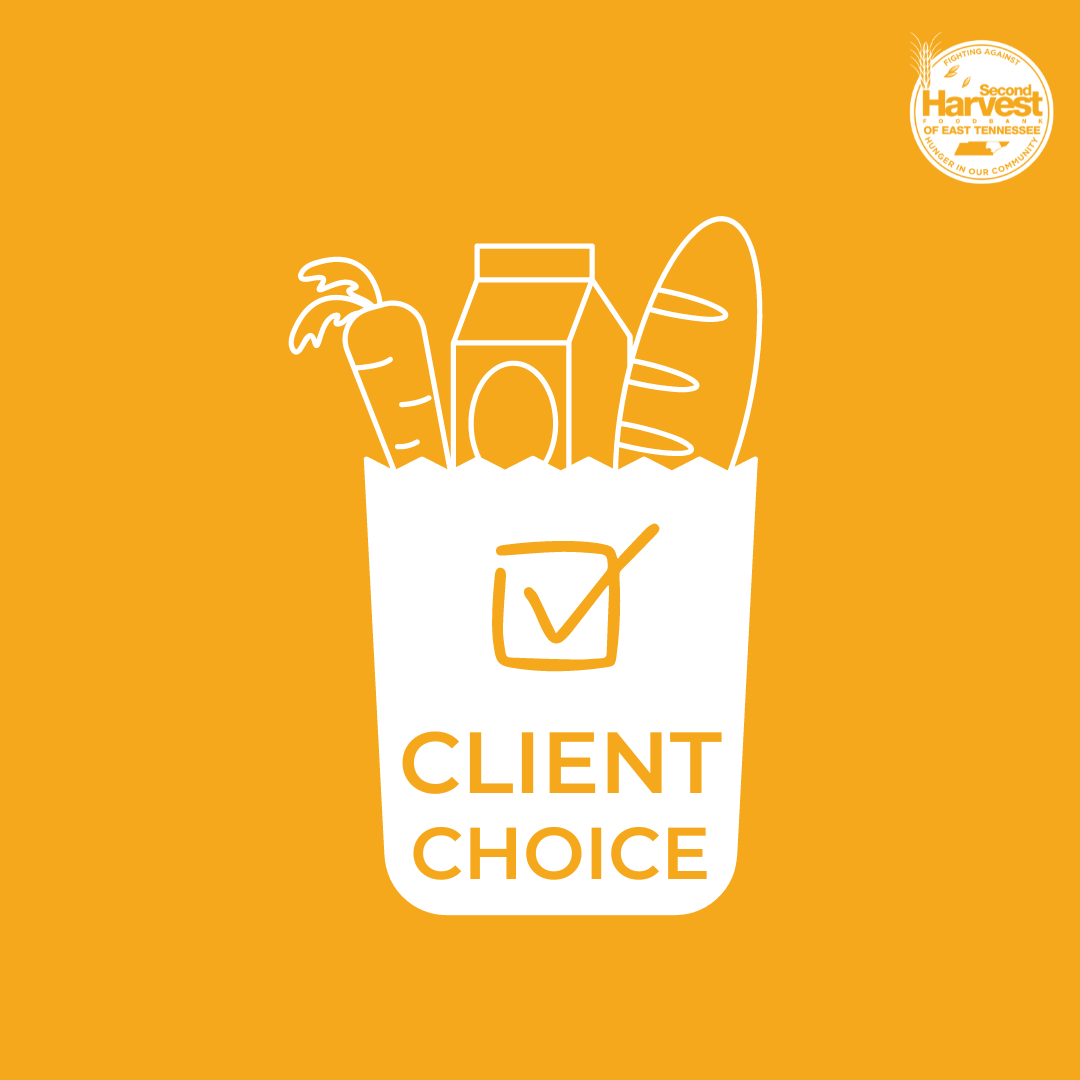This month, Second Harvest would like to educate and bring awareness to the benefits and importance of a term in food banking known as “Client Choice,” as it relates to one way our partner agencies serve our neighbors experiencing food insecurity in East Tennessee.
Defining Client Choice
The “Client Choice” model is one in which a food pantry offers community members the ability to shop and make decisions about what they receive, as opposed to distributing pre-boxed or bagged items.
A Message to our Partner Pantries
Second Harvest Food Bank of East Tennessee has over 630 partner agencies, which includes several food pantries in each county of our 18-county service area. These partnerships are essential to our mission, as each one allows us to distribute more food to our neighbors, and we are thankful for all the work our partner pantries do to help our community, regardless of whether they offer client choice.
Benefits of Implementing Client Choice
We often encourage our partner pantries to consider implementing client choice as part of their operations, when their capacity allows, due to the dignity and confidence it can provide our neighbors amid other difficulties they may face while seeking support. Unfortunately, when distributing pre-boxed and bagged items, items that may not align with the recipient’s needs end up discarded or redirected in various ways. By implementing client choice, food pantries report less food waste as more applicable foods are distributed to our neighbors.
Here are some other benefits of client choice for our neighbors:
- It recognizes those with food allergies or health conditions that only allow for eating and drinking specific items.
- It adds to an existing sense of responsibility and self-worth that helps our neighbors choose foods that align with their physical, mental, and spiritual well-being.
- It could help diversify the foods our neighbors are choosing, leading to a more nutrient-dense diet. Neighbors experiencing food insecurity do not always have an opportunity to choose what they receive. This could lead to a lack of diversity in their diet if they are purchasing the same things every store visit to potentially stay within a certain budget. The pantry also has an added opportunity to educate our neighbors about the different items offered.
- It strives to add enjoyment, rather than stress, to the shopping experience. There is value in giving our neighbors the opportunity to get food off of the shelves themselves.
- It allows our neighbors to choose foods they know themselves and their families will eat and align with their preferences, such as culturally preferred foods.
Client choice also benefits the pantry that chooses to implement it. Here’s how:
- It helps the pantry save money and limit waste. The pantry can see what families are and are not interested in, so that they are not wasting money and effort on items not chosen and can stretch their budget to offer more products.
- It provides more human interaction at the pantry. Some of our neighbors visiting food pantries may live alone with limited human interaction. Client choice fosters more human interaction at the pantry.
- It leads to relationships being built between pantry volunteers, staff, and our neighbors. Through the added human interaction, pantry volunteers and staff can build deeper relationships with the neighbors they serve. This relationship gives volunteers and staff the opportunity to further help our neighbors by connecting them to other relevant community resources.
- Implementing client choice could lead to additional support from volunteers and donors. Historically, volunteer feedback from pantries that have implemented client choice has been positive, which helps with volunteer recruitment. Additionally, client choice has been supported by donors in the past.
An Alternative: Using a Menu
If a pantry lacks the capacity to implement a full shopping experience, whether that be because of lack of space or time due to high demand, menus (or shopping/grocery lists) can also be used for client choice.
In the menu format of client choice, folks receiving food can be handed a menu to fill out while in line. When the pantry is ready to serve them, the menu is given to volunteers or staff ready to pack up the items. This still offers our neighbors the ability to make choices for themselves and for their family, but allows the pantry to continue operating in an assembly line format to pack bags. Renee, one of our neighbors from Cumberland County, says she prefers the grocery list option compared to the full shopping experience, as it gives her a better idea of all the foods offered and more time to choose if the pantry is busy.
Words from our Neighbors with Client Choice
- “This food pantry really works for me because I have diabetes, and I can’t eat just everything … I can make choices that suit my diet.”
- “My favorite thing about the way the pantry functions is that I have choice.”
- “You have a more personal relationship [with the volunteers] when you get to choose.”
- “To be able to choose what we like … that’s pretty special.”
Words from our Partner Pantries with Client Choice
- “I think client choice to me is … the old way we used to do it, it was like we provided food, now I feel like we’re providing a service.”
- “We developed this over years … we didn’t get to this level overnight.”
- “We knew that space was going to be a little bit of a problem … but we’ve managed to work through that.”
- “It’s not just about the food. It’s about the friendship … they feel the love!”
- “I think our staff is more energized because we’re giving the people what they want.”
- “Client Choice puts a personal touch on it. The food is only half of what we do here, the other half is trying to bring a smile [to] everyone’s face.”
- “There’s a lot of different jobs for people. If you can’t carry, you can help people fill out their grocery list.”
Stay tuned to our website and social media as we continue exploring this topic through conversations with participating pantries. For more information regarding client choice, please contact our Agency Relations Manager, Kendra, at kendra@secondharvestetn.org.

